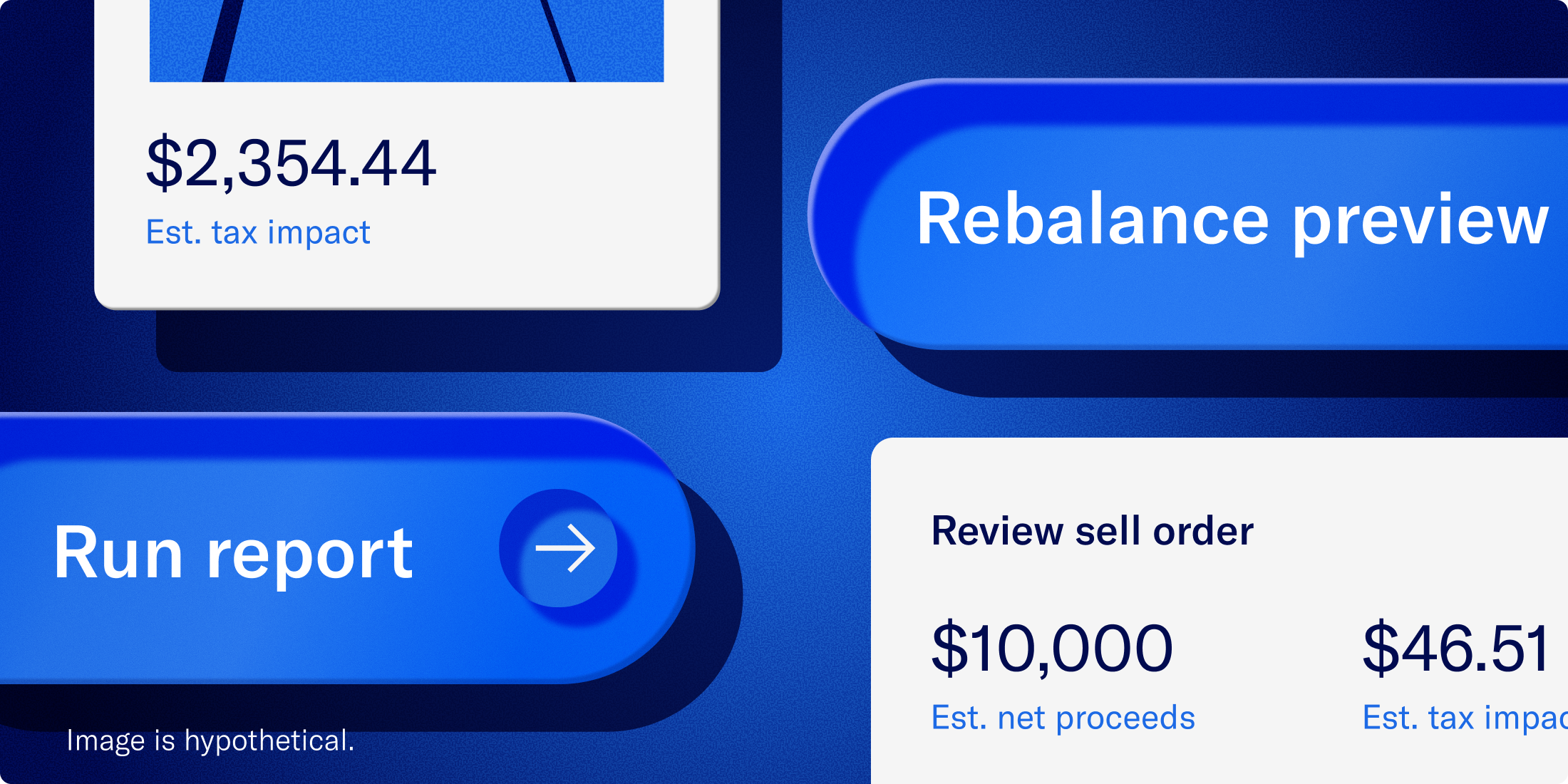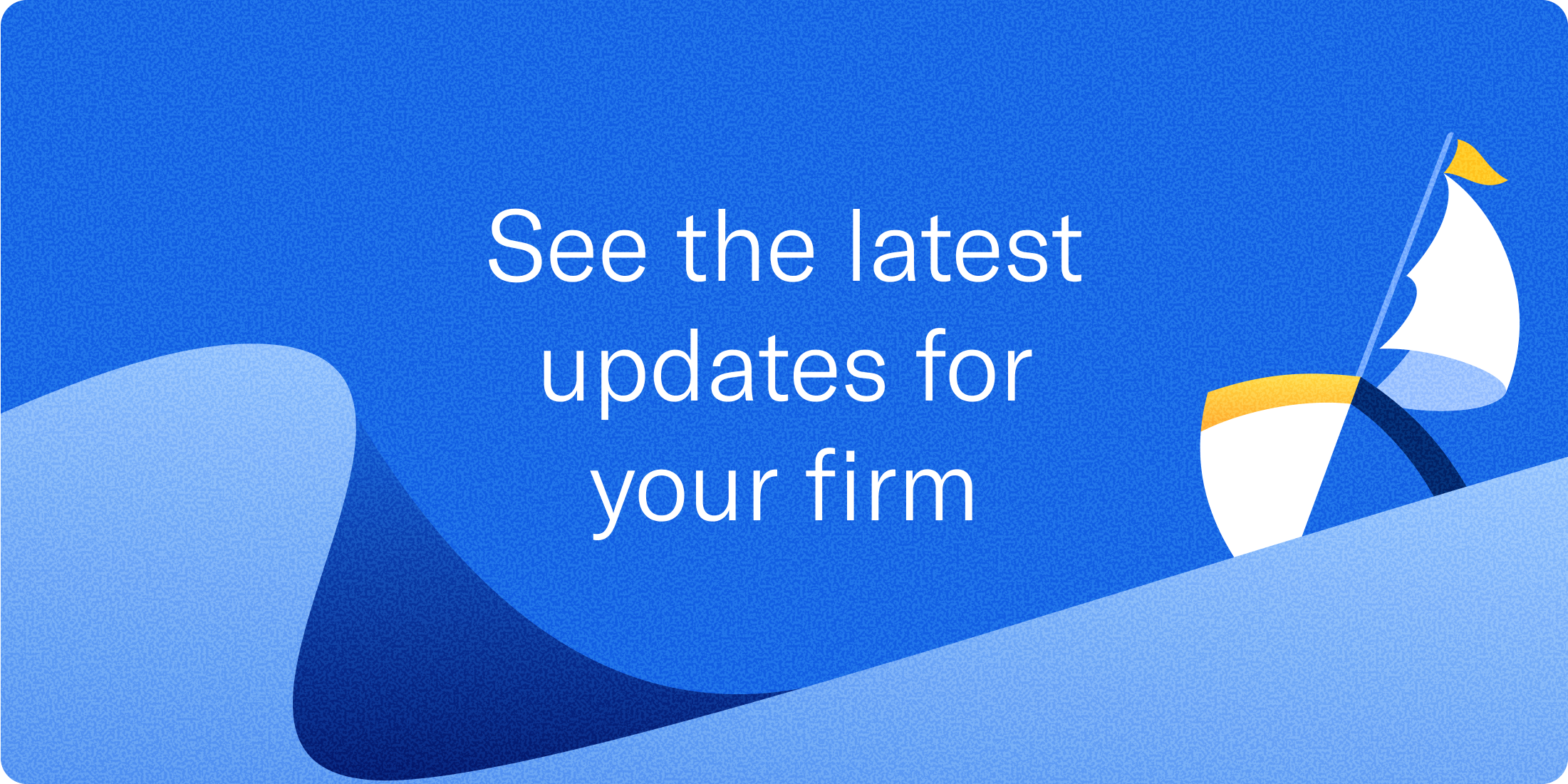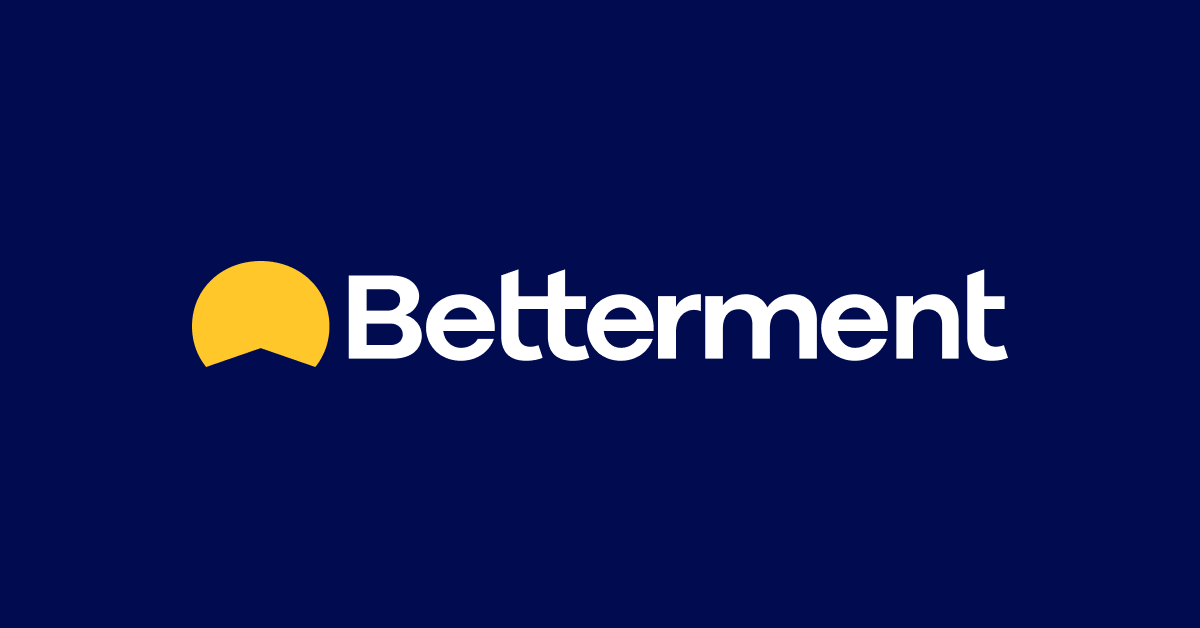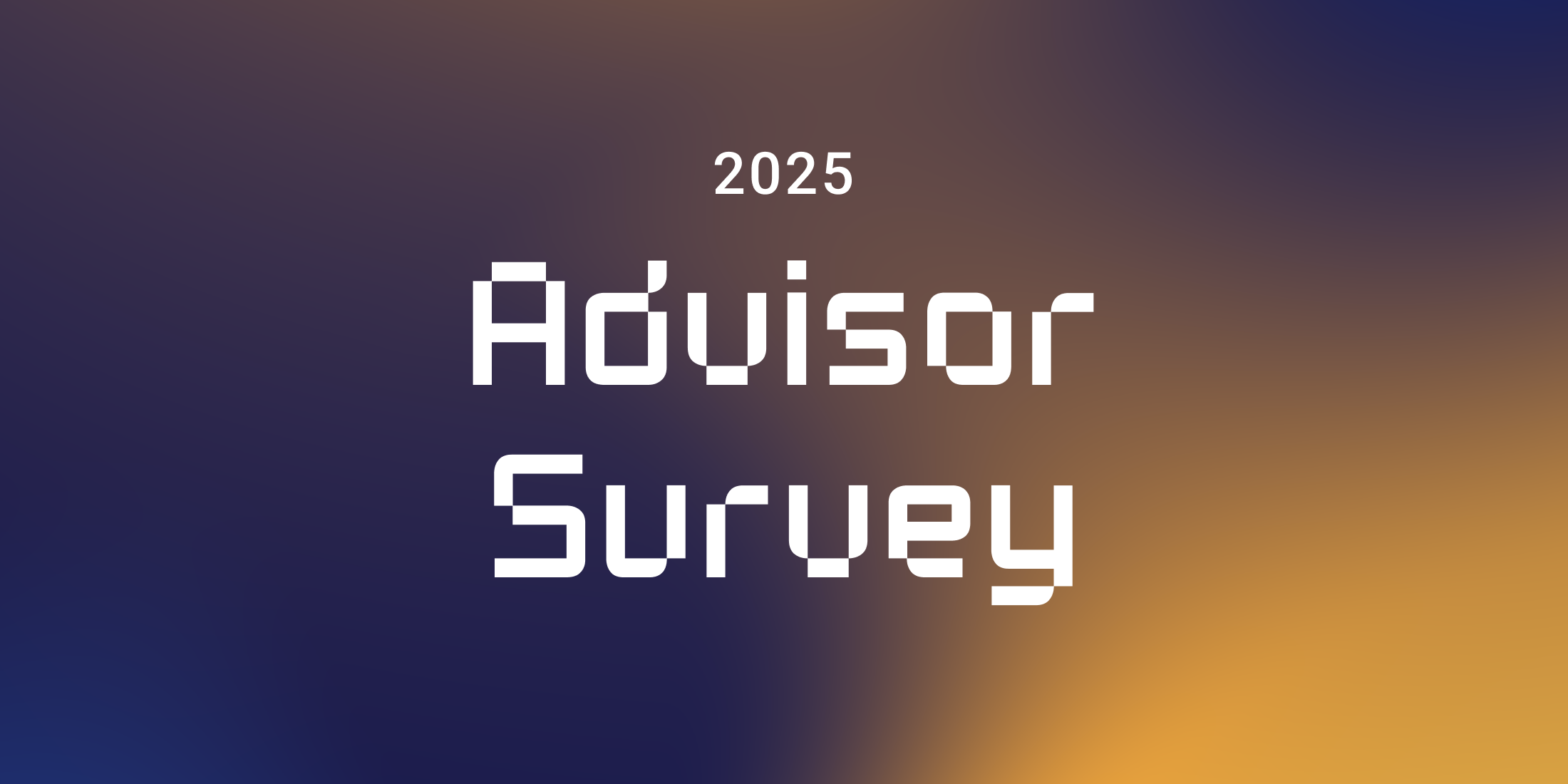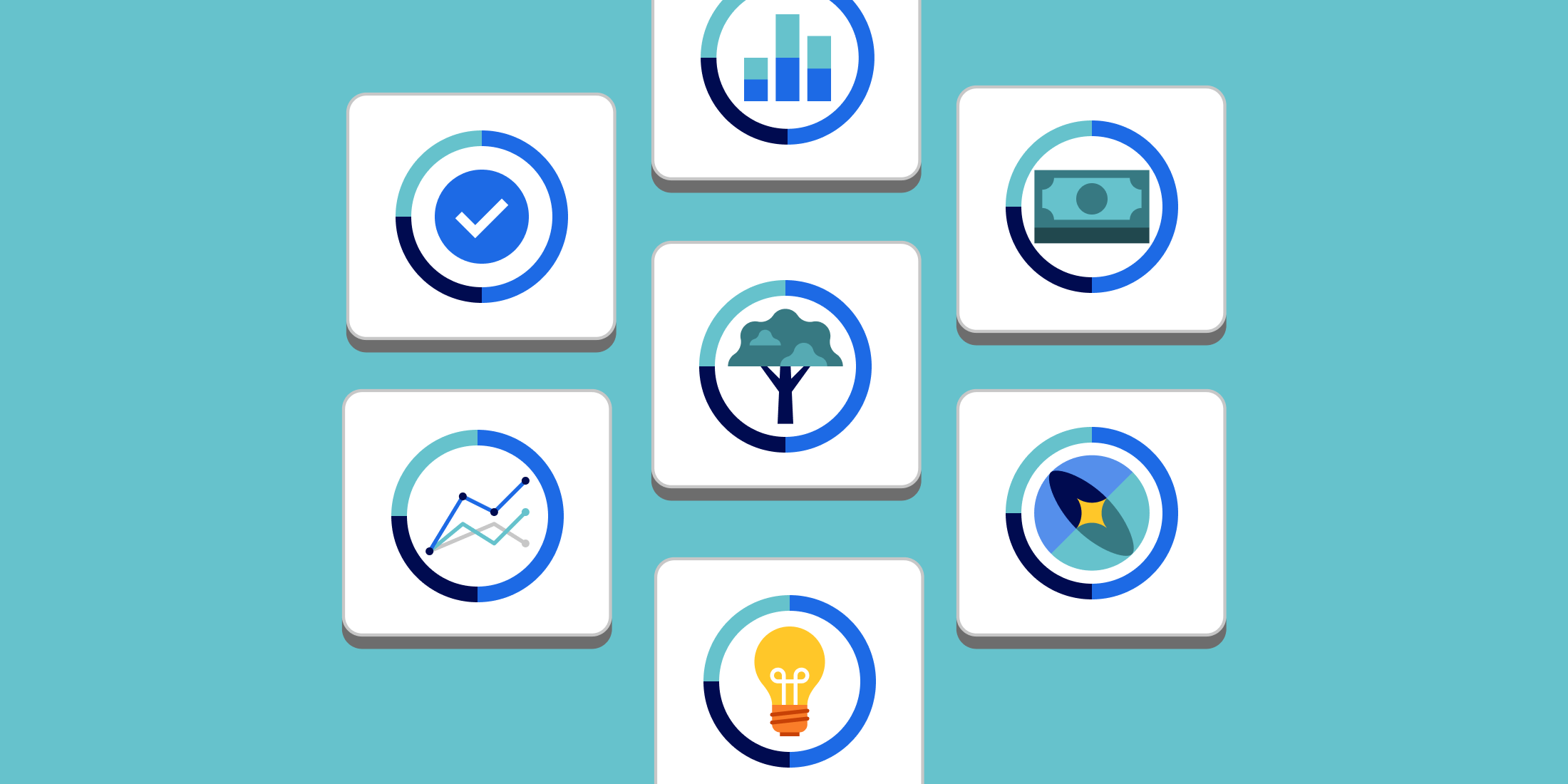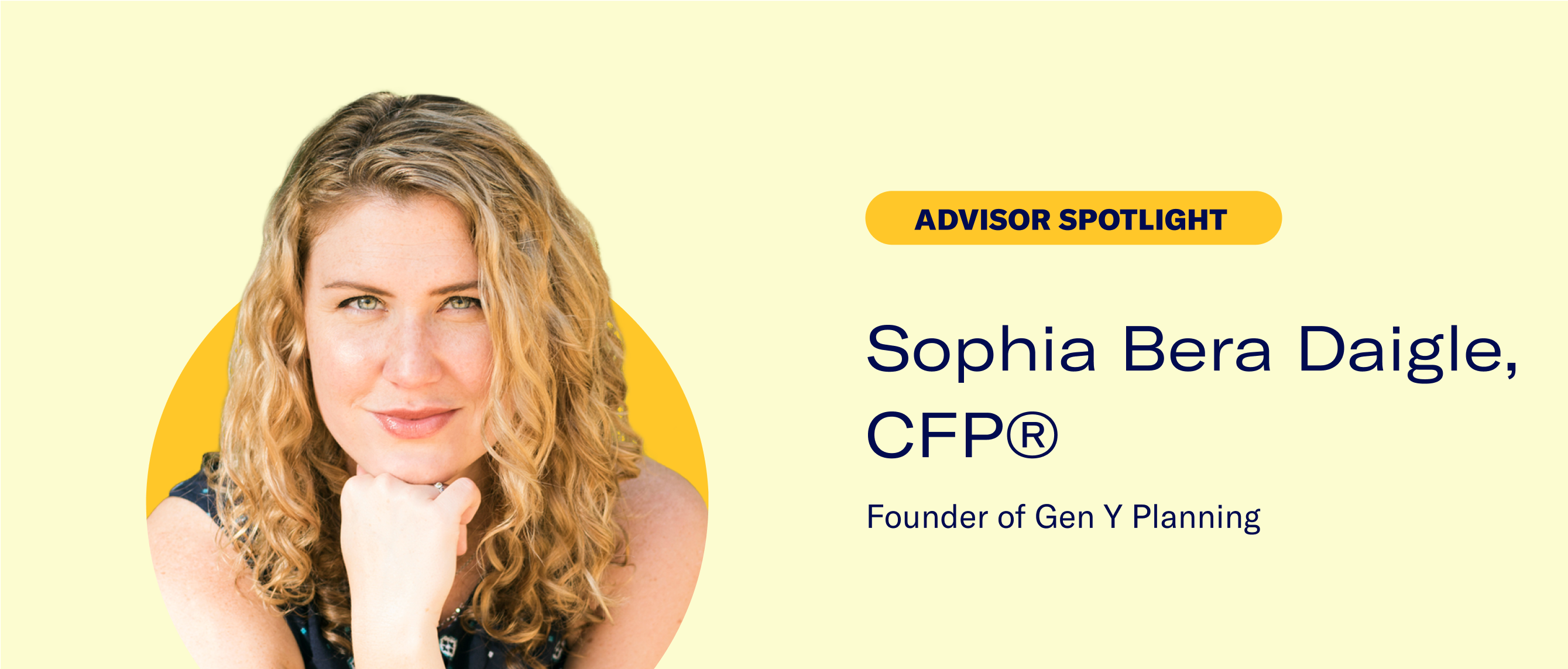Betterment Editors
Meet our writer
Betterment Editors
Betterment’s editorial team draws on decades of combined experience to bring you clear, practical points of view on personal finance, investing, and long-term wealth. Together, we demystify money decisions, help you size up options, and share the knowledge needed to build wealth with confidence and ease.
Articles by Betterment Editors
-
![]()
What’s new from Betterment Advisor Solutions
What’s new from Betterment Advisor Solutions Dec 19, 2025 9:18:01 AM Explore the latest updates designed to give you more control, transparency, and efficiency across your workflows. Table of contents Portfolio management NEW: Tax impact preview when you adjust rebalancing and drift settings The 2026 T3/Inside Information Software Survey Position-level trading Advisor experience Enhanced client management Retirement Improved plan reporting The state of retirement readiness in 2025 Top content Generational approaches to modern advisory services Scaling tax efficiency for every household in 2026 See the tax impact before you act Evaluate the tax impact of portfolio changes before rebalancing—now integrated into more actions than ever. In addition to showing up after a triggered rebalance, the rebalancing preview gives you a clear view of how adjusting rebalancing or drift thresholds may affect clients’ realized gains or losses, so you can act with confidence. The preview screen lets you view: Estimated short- and long-term gains Wash-sale warnings Projected trades Shape the future of advisor technology The annual T3/Inside Information Software Survey is live, and Betterment Advisor Solutions has been included in the trading, rebalancing, and tax-loss harvesting software category. This year, we’ve made tax efficiency even simpler for you and your clients—and we’d love to hear your thoughts. Share your thoughts Coming soon: Trade exact positions with ease Quickly buy or sell specific stocks, ETFs, or mutual funds right from the platform to maintain alignment with each client’s long-term strategy. Trade positions to streamline transitions, offload legacy holdings, and move clients into investments that better fit your model. It’s a fast, efficient way to keep portfolios consistent, clean, and easy to manage at scale. To come in 2026: Direct Indexing and UMAs, along with additional capabilities. We heard your feedback, and have refreshed the advisor dashboard to make client management faster, clearer, and more aligned with how you work. Take a look: Enhanced Household page: Get a consolidated view of all accounts and household performance. No more toggling or scrolling—just faster visibility across every relationship. NEW: Account Overview page: Access deeper insight with a single click. You can now view a detailed breakdown of holdings, allocation, drift, and other portfolio insights directly from your dashboard. Together, these updates make it easier to manage portfolios at the household level, helping you move quickly from insight to client action. Explore your dashboard Deliver more meaningful plan insights with improved reporting Spend less time interpreting reports and more time advising. With improved navigation, expanded data fields, and faster access to trade information, it’s easier to provide the clarity sponsors expect. These improvements can help you keep every plan stakeholder aligned, reduce back-and-forth, and provide reports that are simpler to interpret at a glance. Discover all available reports The state of retirement readiness in 2025 This year’s Retirement Readiness Report uncovers a striking contrast: Employees feel more financially stressed, yet more “retirement ready” than before—a disconnect that shapes how they show up at work. The report highlights 11 key insights about how workers save, spend, and engage with benefits. Advisors can use these findings to help plan sponsors strengthen both long-term retirement readiness and short-term financial wellness. Read the report Generational approaches to modern advisory services Our latest Advisor Survey highlights how RIAs are adapting to a rapidly changing landscape. Gen Z, Millennial, Gen X, and Baby Boomer clients all bring different expectations around communication, technology, and financial guidance. You’ll find insights on shifting workflows and the rise of tech-forward advisory models, as firms blend automation, AI, and personalized service to meet clients where they are. Check out the survey Your 2026 tax game plan: From optimization to scale In our upcoming webinar, Betterment thought leaders discuss how leading firms are systematizing tax efficiency at scale. Get practical ways to extend after-tax value across every household using Betterment’s automated portfolio management tools. Register today Log in to explore what’s new, or reach out to your relationship manager if you’d like to take a closer look at any of these features. If you’d like to take a look around with someone from our team, book a demo. -
![]()
What’s new from Betterment Advisor Solutions
What’s new from Betterment Advisor Solutions Oct 2, 2025 4:11:04 PM Discover the latest products and features launched in Q3 2025, designed to give advisors more control, flexibility, and transparency. Table of Contents Rebalancing Billing Integrations Advisor experience Retirement Explore our newest updates, featuring enhanced portfolio management, smarter billing, and a smoother experience. This upgrade is designed to help you gain more control and transparency for delivering efficient, tax-smart outcomes to your clients. Preview the tax impact before you rebalance No surprises. No blind spots. Just a clear view into the expected tax impact–down to the position level and how it factors into each client’s capital gains allowance. Now you can see what happens when you trigger an immediate portfolio rebalance. And soon, you’ll be able to preview the tax impact when you: Turn on/off rebalancing or change the drift threshold Initiate a portfolio migration The preview screen also provides insights into wash sale warnings, short- and long-term gains and losses, post-trade weights, and more. We're making it easier to evaluate tax implications and make more informed decisions aligned with your clients’ goals. Take an interactive tour Streamline fees with cash-first billing Now when you choose cash-first billing, you can opt into a strategic fee structure that draws funds from Cash Reserve, then taxable investing accounts, and lastly, retirement accounts to better preserve tax-advantaged dollars. With cash-first billing, you can: Improve cash flow management: Avoid liquidating investments to cover advisory fees, reducing potential tax implications. Create a seamless client experience: Ensure fee payments are handled smoothly from Cash Reserve balances, so clients can stay fully invested without interruption. Tailor your approach: Choose a fee structure that suits your needs, and lets you provide a more personalized approach to portfolio management. Cash Reserve offered by Betterment LLC and requires a Betterment Securities brokerage account. Betterment is not a bank. FDIC insurance provided by Program Banks, subject to certain conditions. Learn more. Adjust fees with flexible sharing Now you can fully cover (or share) Betterment fees out of the overall fee you charge clients, giving you greater flexibility in how platform costs are managed. This option lets you absorb, share, or pass along fees based on your business model, creating a more transparent experience that aligns with your practice. Learn more Streamline reporting with the Capitect integration Now you can view Betterment accounts alongside other custodians in Capitect, a robust reporting and billing platform. Our latest integration lets you access client data and run performance reports—all in one place—so you can manage more with less effort. Learn more Access robust transaction reporting faster With our refreshed Client Activity Page, you can see recent transactions, trade-level details, and allocation changes all in one place. With easier access to client data, you can respond to clients quicker, with clearer information. Gain more flexibility in account setup You now have greater control over how you plan and organize client accounts. Instead of being required to assign a goal, you can set up accounts with or without them—giving you the flexibility to structure accounts that align with your workflow. Make solo 401(k)s simpler and more rewarding Your self-employed clients may now be eligible for up to $1,500 in tax credits—$500 per year for three years—when they open a solo 401(k) with auto-enrollment. As part of our fully digital solo 401(k) solution, auto-enrollment helps further maximize client savings by streamlining contribution setup and eliminating manual steps. Accounts default to a 3% contribution rate to ensure eligibility, with the flexibility to adjust and integrate seamlessly with our tax-smart tools to maximize efficiency. You and your clients can also choose the funding approach that works best for you, lowering barriers to entry so clients can start saving sooner and stay on track. And with upcoming Roth enhancements, including mega backdoor Roth conversions, your clients will have even more ways to boost retirement savings. Learn more Unlock greater plan onboarding oversight Plan advisors can now view detailed onboarding progress with estimated launch dates and key details for every plan: Onboarding tasks: Review what’s in progress, not ready, or complete, so you always know where each plan stands. Launch milestones: Stay on top of key dates like document signing, employee setup, and payroll approval to ensure a smooth plan launch. Plan details: Quickly access plan type, payroll provider, and your Betterment onboarding contact to manage every plan with confidence. If you missed the last update, see all the new features in Q2 of 2025. And, if you’re ready to talk to someone on our team, book a demo today. -
![]()
How to set up the Capitect integration
How to set up the Capitect integration Oct 1, 2025 4:18:05 PM Overview Capitect offers modern, holistic performance reporting, flexible client billing, and personalized portfolio rebalancing tailored for today's advisors and their clients. The integration between Betterment Advisor Solutions and Capitect enables advisors to easily include Betterment accounts in reporting, billing, and rebalancing. The information sent to Capitect includes: Account information Positions Transactions Tax lots Enabling the integration You can set up this integration for your firm by taking the following steps: Log in to your advisor dashboard and navigate to Settings > Integrations. Select Capitect from the list and click Connect to Capitect. You will see confirmation that the integration has been enabled. Data will be sent to Capitect within one business day. Once the integration has been enabled, Capitect will reach out directly with next steps. -
![]()
Learn how switching custodians could power your practice into the future
Learn how switching custodians could power your practice into the future Sep 11, 2025 12:00:00 AM Learn how switching to Betterment Advisor Solutions could power your practice into the future. Running an independent RIA comes with big challenges—and even bigger opportunities. Betterment Advisor Solutions gives you an all-in-one custodial platform with the technology and support to streamline your business, serve more clients, and deliver a modern experience across cash, investing, and retirement. Our service and technology can simplify the switch At Betterment Advisor Solutions, we know switching custodians is a big move, so we’ve made sure that not only is the process easy, but that your experience in your first 12 months helps set you up for long-term success. We’ve designed a three-pronged approach to help you make the switch: #1 A dedicated relationship manager You're more than just a number or a customer — you're our partner. The high standard of service we hold ourselves to means that we have no minimum AUM requirement and every firm gets a dedicated single point of contact, no matter their size. Your relationship manager is your guide, ensuring you are fully trained on how to best use all our tools and features throughout your first year. Your relationship manager’s goal is to get you utilizing our platform to its maximum capability for your practice and your clients. #2 Fully digital onboarding Our digital onboarding streamlines the repapering process for you and your clients. You can easily onboard individuals and households, and complete account set up paperlessly. They’ll get a single email to sign off on everything at once. #3 Tax-smart asset transitions Our tooling enables you to granularly control how assets are moved from your current custodian to Betterment Advisor Solutions in a tax-efficient manner. You can leverage our paperless workflows to move assets over in kind. Easily move your client’s funds into your preferred portfolio model while optimizing their tax impact. Our people and technology empower 600+ RIAs and their clients each day Once you’ve made the switch to Betterment Advisor Solutions, we’re dedicated to seeing your practice grow. We take pride in being the modern end-to-end custodian for the modern RIA, balancing human support with future-forward technology. As our partner, we give you the tools that help simplify and streamline your practice operations while building a successful book of business. Dedicated advisor support Regardless of your firm’s size, we provide dedicated support to answer all of your questions. Our support team members are platform experts, here to resolve any issues you may face and answer questions from the most mundane to the most technical. We’re more than just chat support. You can reach out via email or phone for any type of issue or question. Your relationship manager isn’t just for onboarding. They’re your long-term partner every step of the way. “Advisors, especially small and mid-sized RIAs most affected by Schwabitrade, shouldn't sit back and accept lower-quality service. We’re here to provide you with a better option.” —Tom Moore, Senior Director, Betterment Advisor Solutions Time-saving automation tools Our tools take care of critical-yet-time-intensive tasks so you can focus on your real value — planning, strategy, and client relations. We automate tax-optimization strategies for you including asset location and tax loss harvesting. Flexible billing gives you the freedom to use custom asset-based, fixed fee, or tiered billing plans and set the frequency your clients are charged. We collect the fees for you and pay them out automatically. Our Co-pilot dashboard aggregates urgent client needs all in one place, becoming your client command center, enabling you to streamline your high-priority work. Exceptional client experience Using our client-facing mobile app and web experience paired with our powerful advisor planning tools, your firm can provide one of the most delightful client experiences on the market. Empower your clients at home or on the go with our interactive portal, giving them convenient insights into their investments. Plus, you can sync held-away accounts so they see all of their savings and investments in one place. Better manage household accounts with a customizable account structure, using bucketing strategies to help clients work towards long-term goals. Engage with your clients on a deeper level with our portfolio analysis, retirement planning, and performance tracking tools. Build your seamless tech stack We integrate with other well-known tools giving you a better experience for you and your clients. And don’t worry, if you work with a tech provider we haven’t partnered with, your relationship manager will explore adding them to our integration options. Transparent pricing in a not-so-transparent world Schwab and other custodians may say their custody services are “free” but in the RIA space, it usually means that your client is the one paying for it. We charge a simple platform fee that allows us to improve our custody platform while providing exceptional support. This enables you to truly put your clients first and help them grow their wealth. -
![]()
How Gen Z and Millennial advisors balance AI risks with tech growth
How Gen Z and Millennial advisors balance AI risks with tech growth Sep 4, 2025 10:15:00 AM The financial advisory industry is undergoing a transformation. Shifting demographics, rapid technological advances, and economic volatility are reshaping how advisors work and who they serve. With a new generation of RIAs entering the profession and younger clients making up a growing share of the market, new perspectives are emerging—on the economy, on technology, and on the very role advisors play in managing investments. Perhaps the most indelible shift of all, is the accelerating pace of AI, requiring advisors to revise how they deliver value to the next generation. In the second installment of our Advisor Survey, Betterment Advisor Solutions spoke to 500 independent RIAs, to find out how financial advisors are responding to the shifting financial planning landscape. Not surprisingly, many advisors (53%) report using AI to stay current with industry updates. And that’s not all, adoption of AI tools has climbed 10% since this time last year. However, the majority of advisors (65%) say they are worried about clients turning to generative AI platforms for financial advice. While AI is already making advisors’ lives easier, it also presents new challenges around client trust, accuracy, and the role advisors play in managing their clients’ wealth. How advisors are using AI As financial advisors wrestle with the paradox of AI, there are some areas we’re seeing Gen Z/Millennials and Gen X/Baby Boomers agree on: AI over social: 53% of advisors now use AI to stay current with industry updates, surpassing social media (48% in 2025, down from 59% in 2024). Positive impact: Overall, advisors are mostly positive about AI's impact, with more Gen Z/Millennials being "very positive" (45%) than Gen X/Baby Boomers (37%). Client misuse: While advisors are finding important use cases for AI in their own work, they’re concerned about clients using AI for financial advice (65%). Their top concerns are the lack of regulation and oversight in Generative AI providing financial advice, increasing the likelihood that clients will misinterpret or receive inaccurate financial advice from Generative AI platforms. But from there, key differences divide younger and older generations. For instance, Gen Z/Millennials tend to lean into AI for administrative tasks (like note taking and meeting recaps) as well as fraud detection; whereas Gen X/Baby Boomers use it more for client communication and portfolio management. The generational divide in AI adoption reveals that the technology is being shaped by client needs, not necessarily by advisor preferences. – Dan Egan, VP of Behavioral Finance and Investing at Betterment As digital natives, younger financial advisors have deeper concerns about the omnipresence of AI and so-called “ChatGPT financial advisors.” Although they might be more cautious about how AI is used, our survey shows that these advisors are perhaps better equipped to manage the financial planning needs of the Gen Z/ Millennials clients, who are looking for a seamless, modern way to manage their money. The way advisors balance caution with innovation will reshape the financial planning journey. To dive deeper into how RIAs across generations are viewing AI, technology, and shifting client expectations, download our latest survey below. -
![]()
FAQ: Custom Portfolios for Advisors
FAQ: Custom Portfolios for Advisors Sep 3, 2025 11:15:00 AM Build your own custom model portfolios while leveraging all of Betterment’s sophisticated portfolio management features. What are custom model portfolios? The Betterment Advisor Solutions platform allows advisors to customize portfolios ETFs, single stocks, and mutual funds, while maintaining access to Betterment’s suite of automated features including: automated rebalancing tax-loss harvesting asset location / tax coordinated portfolios tax-optimized sales for withdrawals glide path rebalancing and more How do I create custom model portfolios for my clients? To get started, log into your dashboard and navigate to Portfolios > Create a portfolio > Custom portfolio. Follow the prompts in the module to create securities groups, determine risk levels for your portfolio, and more. What are the program requirements? There are no asset minimums or additional fees required to build custom portfolios. I have more questions - who can I talk to and where can I learn more? Please fill out this form, and our team will follow up with you. Security Selection: What securities are supported? At this time, we support ETFs, mutual funds, and single stocks. What ETFs are supported? Almost all ETFs are supported, as long as there is sufficient liquidity and trading volume. How many different asset allocations can be included in one portfolio? For each custom portfolio, firms can define anywhere from 1 to 25 asset allocations. Betterment Automated Features: What is Tax Loss Harvesting (TLH)? How does this feature work with custom model portfolios? Tax loss harvesting is the practice of selling a security that has experienced a loss—and then buying a similar asset to replace it. The switch does two things: it allows the investor to realize, or “harvest”, a valuable loss while keeping the portfolio balanced at the desired allocation. Capital losses can lower your clients’ tax bill by offsetting gains and reducing ordinary taxable income up to $3000 per year. The custom model portfolios program allows firms to designate a primary, secondary, and IRA secondary ETF ticker for each asset class to be used for TLH. How does Tax Coordination work? Tax Coordination is designed for investors who are saving for retirement in more than one type of account, including taxable accounts, traditional IRAs, or Roth IRAs generally with the same time horizon. Once you set it up, Betterment will look across all of the accounts grouped under retirement and automatically reorganize which assets are held in which accounts. Of these three types of accounts, each are taxed differently: (1) taxable accounts, (2) traditional IRAs or 401(k)s, and (3) Roth IRAs or 401(k)s. With Tax-Coordination, the assets are then arranged (unequally) across all coordinated accounts to help maximize the after-tax performance of the overall portfolio. We do this in a way that keeps the overall allocation the same while boosting after-tax returns. We've outlined the potential benefits of Tax Coordination and some reasons you may not want to use it here. For more information on our estimates and Tax Coordination generally, see full disclosure here. How does Betterment rebalance client portfolios? How does automated rebalancing work? More information about Betterment's automated rebalancing feature is available here. What capital market assumptions are used for balance and spending power projections? Firms can input their own capital market assumptions, or Betterment's team can provide assumptions. -
![]()
Helping Millennials Match Their Money with Their Values
Helping Millennials Match Their Money with Their Values Aug 20, 2025 9:00:00 AM A conversation between Sophia Bera Daigle and the Betterment Advisor Solutions team about building a goals-driven practice for millennial clients. Advisor: Sophia Bera Daigle, CFP® After working in traditional financial planning firms since 2007, I quit my job at a NY start-up to launch my own firm, Gen Y Planning. I now live in Austin, Texas with my husband, Bryan, and our son, Theo, who was born in the fall of 2020. After spending several months living abroad in 2019, we’re excited to share our love of travel with Theo! Firm: Gen Y Planning Gen Y Planning brings financial planning to millennials. We now work with a variety of clients in their 20s, 30s, and 40s who are in the middle of making huge life decisions: navigating a new job, buying a home, merging finances, starting a family, relocating, and pursuing advanced degrees. The Gen Y Planning team believes that the earlier you work with a CFP®, the faster you can build a secure financial foundation for the future. Why did you decide to become a financial advisor? I like to help people use their money to match their values. My clients range from creatives to small business owners to Silicon Valley employees. Whether you plan to retire early, take a sabbatical, or build a career you love, I’m excited to help! What is the least understood aspect of your job? I would have to say the least understood aspect of my job is that financial planning does not just mean managing investments. I offer comprehensive financial planning, which includes all areas of your financial life: paying down debt, protecting assets that have been accumulated, purchasing a home, refinancing a mortgage, reviewing job offers and company benefit packages, reviewing tax returns, and proactively tax planning. My approach is goal-driven with my clients in the driver's seat. I work with clients to co-create their recommendations so that they’re more likely to implement the recommendations. Then my team and I act as their accountability partners to see that they are following through on the recommendations so that they can reach their goals. Why did you choose to partner with Betterment Advisor Solutions? I like that Betterment offers robo-advising, which includes automatic rebalancing, at a low, flat platform fee. In addition, Betterment has a simple, user-friendly interface that makes it easy for clients to navigate. Betterment also has great features like effortless Roth conversions and tax-loss harvesting. Something small that I love is the ability to set up an automatic investment weekly instead of monthly. It’s a great way to dollar cost average into the market while also smoothing out cash flow. How have you set up your firm's tech stack? And how has leveraging automation impacted your practice? We utilize a handful of low cost tech tools (Trello, Dropbox, Zoom, TextExpander, Gmail, etc.). We have found that our philosophy of “simple over sexy” has a greater impact on our clients than fancy software with charts and graphs. We don’t pay for expensive financial planning softwares that produce twenty-page reports our clients will never look at. The benefit for us and our clients just isn’t there. We like using Trello to track our clients’ financial goals and life changes and to take notes. We have a board for each client so we can easily prepare for our client meetings. We have a Google form we send to clients before their check in meeting and they update their net worth in Excel. We send them a one-page meeting recap after their meeting in a PowerPoint that we print to PDF. It’s efficient, simple, and the action items that came from the meeting are clear. Can you walk us through what the onboarding experience might look like for a new client at your firm – from when they land on your website to your team actually opening and transferring their assets – and how Betterment may fit into the onboarding workflow? An interested potential client starts by scheduling a 30-minute introductory meeting. They would fill out an intake form prior to our meeting. During the meeting we learn more about them, dive into the services we provide, and end with a quote for our services given their financial situation. After, if they decide they want to become a client, they sign a contract, pay their upfront client fee, and schedule their first client meeting. Prior to this meeting they are given a list of documents to gather and upload to a Dropbox folder for us to review. What is one critical lesson you have learned from your clients? My values and priorities are not necessarily the same as my clients. I need to keep this in mind when a client is making a decision that might not be the best financial decision, but may be a really important life decision that deeply affects other areas of their life. In that case, I want to help them figure out the best way to financially navigate through that choice so that they can continue to reach their goals. How has a remote or hybrid work environment changed your relationship with clients and prospects? I have always run my business remotely, which has a plethora of benefits for clients, the business, and my employees. Clients can meet in the comfort of their home or office and don’t need to worry about commuting to our meeting. It also allows me to work with people across the country and travel myself. It opens my workforce options up to the whole country as well since I don’t require my employees to be in one location and come into an office. I can’t imagine having in-person client meetings again. Now, when I get to see my clients in person, it’s only social! It’s way more fun that way! What do you think is the biggest opportunity for advisors today? I think the biggest opportunity for advisors is in working with the millionaires of tomorrow—young professionals who are making good money but maybe haven’t accumulated much wealth yet. They still need planning in many areas of their lives: paying down student loans, purchasing their first home, negotiating job offers, navigating company benefits and company stock options, starting a family, and saving for retirement. If you could only give one piece of financial advice, what would it be? Don’t wait to start. Small steps have a dramatic impact on your overall financial situation. You don’t want to be shoulders deep in a complex financial situation before you seek help. Find a planner who will be your financial partner to navigate finances with you so you can reach your goals and achieve your dreams. -
![]()
The #1 skill advisors need to help clients navigate the Great Wealth Transfer
The #1 skill advisors need to help clients navigate the Great Wealth Transfer Jul 9, 2025 1:01:43 PM How your firm can prevent losing business as your clients transfer their wealth. We’ve been hearing about the “Great Wealth Transfer” for years now. There is an estimated $100+ trillion that will pass from baby boomers to Gen X and millennials, but recent data has found that most clients are still not ready for it. The problem? Many families aren’t having essential conversations about how their wealth will be passed down—or who will be responsible for managing it. Here’s how your firm can help. The challenge: Guiding clients through a generational shift Money can be stressful. In Betterment research, we’ve found that 62% of people have moderate to significant anxiety around their finances. Pair together the complexities of financial planning with potentially emotional conversations with loved ones, and many families may feel lost or confused. Recent data shows that many families are underprepared: An RBC Wealth Management–U.S. survey found that only 52% of givers have had conversations about values with their heirs, and just 39% have provided guidelines for what they want to do with their inheritance. Meanwhile, UBS research highlights a gender difference within this gap: 80% of women who inherited wealth from their parents and 83% of widows experienced a “wealth transfer challenge.” UBS found that many widowed women did not have an established wealth transfer plan with their partner, and one in four said they did not know where all their partner’s wealth was before their passing. This lack of preparedness is alarming, but it presents an opportunity for your firm to step up and help your clients, ultimately building long-term relationships. “Advisors can offer a lot of value by helping their clients create an estate plan and navigate conversations with family members. By being a trusted partner in the process, advisors can build stronger relationships not only with current clients but also with the next generation.” – Alison Considine, Director of Betterment Advisor Solutions The opportunity: Become a family’s long-term guide According to the RBC Wealth Management–U.S. survey, the primary driver of feeling unprepared for an inheritance is not tax complexity or investment strategy—it’s a breakdown in or lack of communication. The UBS research found the same issue, with nearly one-third of women who inherited assets from their parents having no prior conversations with them about the wealth transfer. Over the coming years, communication is likely going to be the #1 skill advisors need to help clients manage a wealth transfer. If advisors want to keep financial planning relationships intact across generations, they need to get ahead of and lead these conversations. Here are three guidelines for successful wealth transfer conversations: Educate clients early. Help them understand how to transfer wealth tax-efficiently, preserve family assets, and make sure their wishes are clearly documented. Proactive education builds confidence and prevents costly surprises down the line. Bring the next generation to the table. Sit down with clients and their children or heirs to discuss goals, responsibilities, and expectations to help avoid misunderstandings down the road. Reframe the discussion. Wealth transfer isn’t just a financial transaction—it’s a personal story about family legacy, passions, and future impact. Use open-ended questions to surface values like philanthropy, entrepreneurship, or family tradition—and make those priorities central to the planning process. 10 questions to ask clients and their heirs to help facilitate a smooth wealth transfer Use the following questions as a starting point to begin intergenerational discussions around wealth transfers. As an advisor, you know your clients best, so tailor your conversations to their personal situations. For clients (Wealth givers—often Baby Boomers or Gen X): Have you clearly communicated your intentions for your wealth with your children or heirs? (Start by opening the door to alignment and transparency around values and expectations.) What values or legacy do you hope your wealth will help preserve or promote? (Encourage your client to think beyond dollars and towards impact.) Have you established or updated your estate plan, including wills, trusts, and beneficiary designations? (Identify potential gaps and ensure documents match current intentions.) Would you consider giving a gift to heirs or causes during your lifetime to see the impact of your wealth now? (Spark discussion about strategic giving and potential tax benefits.) Have you talked to your heirs about the responsibilities that come with inheriting wealth? (Emphasize financial literacy and preparedness of the next generation, which can lead to more intergenerational communication.) For heirs (often Gen X or Millennials): Do you understand your parents' or benefactors’ financial values and intentions for passing on their wealth? (Encourage open dialogue and reduce surprises or misunderstandings.) Do you feel prepared to manage or invest inherited assets? If not, what guidance do you need? (Help identify financial education needs or planning opportunities.) Do you have your own estate plan in place to manage future wealth transfers? (Promote proactive planning to help protect assets and preserve family goals.) Do you want to be involved in your own charitable giving or collaborative family philanthropy efforts? (Engages heirs in legacy planning and shared purpose with their parents.) What are your personal financial goals, and how might an inheritance affect those plans? (Show that you are thinking about the heir's personal needs as well.) How Betterment Advisor Solutions can help navigate the Great Wealth Transfer Betterment Advisor Solutions equips advisors with technology and tools that make it easier to communicate and collaborate across generations: Tax-smart technology: Leverage automated tax-loss harvesting, customizable drift-based rebalancing, automated asset location, and more to help clients manage taxes. Streamlined client portal: Offer your clients a white-labeled client portal, where they can easily see their full financial picture, with your branding on their statements and tax forms. Goals-based framework: Create customized goal names to create a personal feel for each client’s cash, investments, or held-away accounts.

